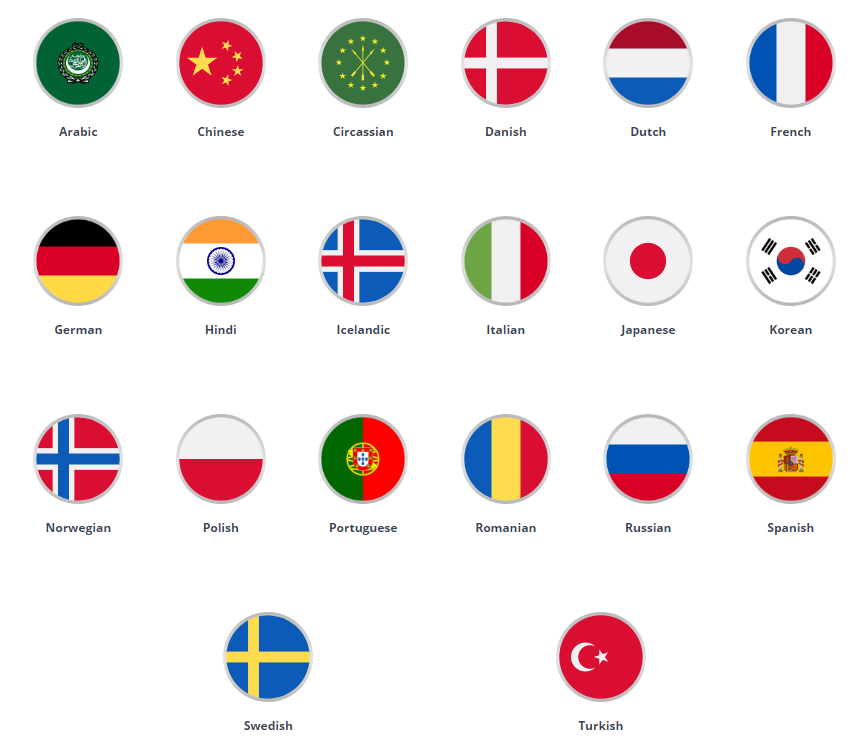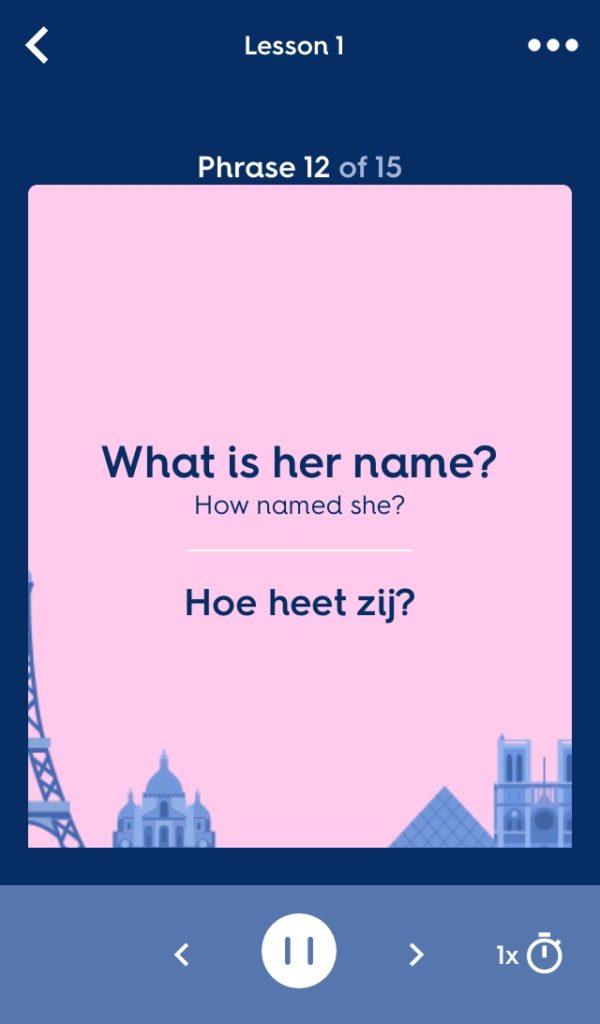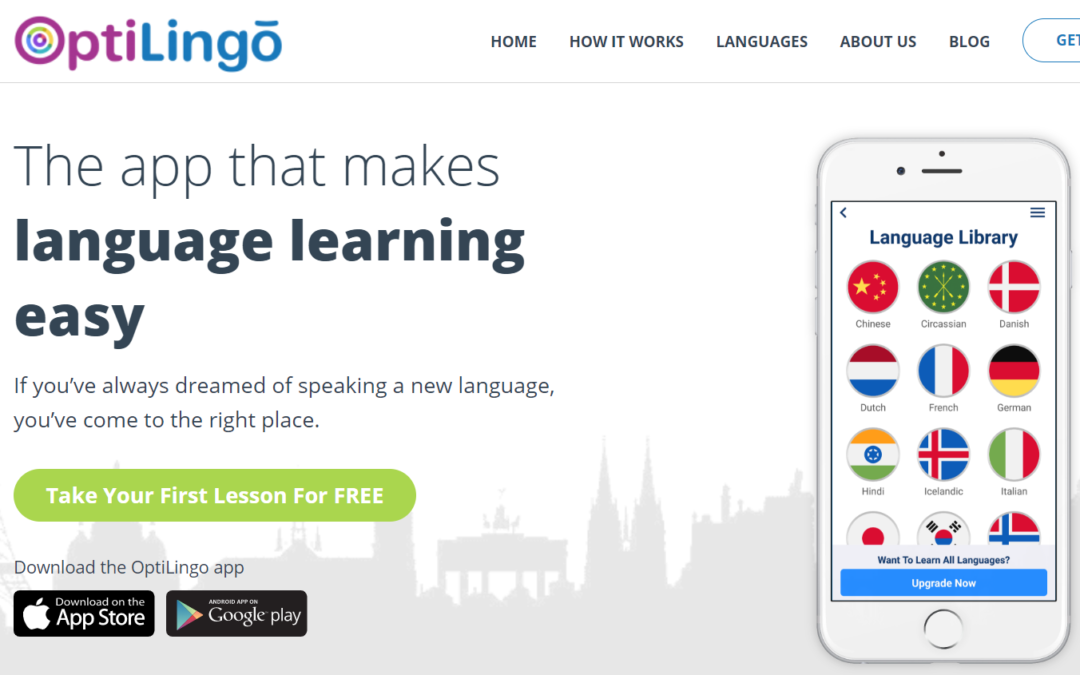Having heard about it because its creator is on Twitter, I wanted to review Optilingo.
What is Optilingo?
According to its website, Optilingo is an app that uses a spaced recognition system (SRS) and focuses on speaking to provide a guided immersion learning experience. At first glance, this seems to be similar to the Michel Thomas method e.g. listening and repeating phrases.
Optilingo offers 20 languages:

The website recommends 20 minutes of learning per day, and says the first lesson is free. Although I wasn’t sure if one lesson would be enough to judge the app, I was willing to try.
How to sign up for Optilingo
Optilingo has android and iOS versions. I downloaded the iPhone app and selected “Get Started”. You first have to create an account (first and last name, email and password) or sign up with Google. I signed up with Google, and then saw 5 screens with general information about how the app works.
Next, you choose your language. All 20 languages from the homepage were available with 100 lessons each. I chose Dutch.
The Dutch homescreen loaded, with a message that the course would take 29 hours. Lesson 1 loaded and showed a running time of 5:47. There was no level check, so it looks like you have to start from the beginning, even if you already know the language.
What are Optilingo lessons like?
Lesson 1 contained 15 phrases. They were all beginner phrases such as Hello; Hi; Good morning/ afternoon/ evening; What is your name?; My name is; Who is he/she?
First, you listen to an English explanation of what’s to come. Next, each phrase shows up on the screen with:
- English phrase
- Smaller literal translation in English
- Dutch phrase

The English phrase played once, repeated by the Dutch phrase twice.
After the first session, the English phrases are all repeated again, with a short gap for you to say the Dutch phrase, and then the Dutch phrase is repeated twice. The previous screens are showing, so you can read the text if you can’t remember it.
The lesson ends with an explanation of the next step: review of the phrases using spaced repetition.
After the lesson, you go back to the language homescreen, where there is now a message to buy the course or upgrade and access all languages.
You can’t proceed any further without paying.
I opened the app again on the following day, to see if I could review the phrases learned in Lesson 1, but this wasn’t possible, so I can’t judge how well the review phase of the app works.
What does Optilingo cost?
It costs $4.99/month for one language, or $9.99/month for all current languages and any new languages added.
What’s my final Optilingo review?
Highlights
20 languages is a good range, and includes some languages with fewer resources available (e.g. Romanian, Turkish and Circassian).
The literal translation of each phrase is a nice touch. It will help learners to understand exactly what they’re saying in the new language. This is a big improvement from traditional phrasebooks.
The phrases are useful and suitable for beginners. The Dutch recordings were clear and well-pronounced.
Limitations
As I suspected, it’s very difficult to judge the app based on one lesson and no reviews. It would make more sense to do a time-limited trial of one language only. Even 3 days would be enough to go through more than one lesson and see how the SRS works for you.
Not having a level check is a drawback for people who want to use the app to improve. You have to start from the absolute basics, and you can’t see what content is coming up, so you don’t know how useful it will be in the future.
Immersion brings to mind a learning experience heavily focused on the target language. Between English explanations and repetition of English phrases, you’re still hearing more English than the target language. This could be counteracted by including a target language conversation with the new phrases. From the 15 phrases in Lesson 1, you could easily have a simple conversation like:
- Goedemorgen
- Hallo
- Hoe heet jij?
- Ik heet ___
- Aangenaam kennis te maken. Wie is hij?
- Hij heet Michael.
- Wie is zij?
- Zij heet Roos.
That would give a more immersive experience and increase the amount of target language in each lesson.
Ultimately, my Optilingo review results are undecided. The free trial doesn’t allow enough use of the app to make a judgement on how useful it is.
Want more reviews?

